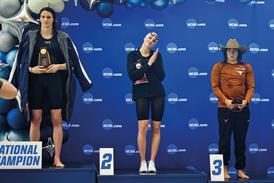Jurisdictions attending the annual meeting of European bar presidents report on developments from money laundering sanctions to the refugee crisis.
Since the dawn of humankind – well, for the last 45 years – there has been an annual meeting at this time of the year for European bar presidents in Vienna. It began as a useful bridge between lawyers on either side of the Iron Curtain, and has continued – since the end of communist domination of eastern Europe – as a place for European bar presidents to meet and discuss. Its timing depends on the longstanding holiday of Carnival and the accompanying Vienna ball season, and it culminates with the Lawyers’ Ball in the Hofburg Palace.
The annual series of meetings and social events around this celebration have an unchanging ritual, and one of them is that each European legal jurisdiction is supposed to produce a written report on events of note which have taken place over the previous year. Not all bars comply, but the documents make for an interesting read.
The implementation of the fourth anti-money laundering directive (2015/849) is one of the common themes this year, and how it impacts each bar. Both Finland and Sweden report, for instance, that the proposed sanctions regime of their governments under the national implementing provisions will take away the sanctioning of lawyers in some respects from the bar’s own disciplinary process, and that they have intervened strongly to try to maintain their bar’s independence.
The refugee crisis is another common topic. A number of the bars have been participating in the ‘European Lawyers in Lesvos’ project run by the Council of Bars and Law Societies of Europe (CCBE) and the German Bar Association (DAV). The project’s main aim is to send European lawyers to the island of Lesvos to support Greek lawyers in the provision of legal assistance to migrants requiring international protection.
It has so far hosted 45 volunteers from 12 European countries , including our own. They have advised individuals from 39 Asian, Middle Eastern and African countries, out of a container – for the sake of privacy – in the Moria migrants’ camp. Of the clients seen, over a quarter come from Afghanistan, with the next two highest countries, Eritrea and Syria, making up a further quarter. France (10) and Belgium (six) have provided over a third of the volunteer lawyers between them to date. The UK has sent one lawyer.
Several of the bars (from France, Italy and Spain) began joint action in 2016 under the rubric of the ‘International Observatory for Lawyers in Danger’, which goes by its French acronym of OIAD. OIAD aims to support lawyers who are threatened while carrying out their professional work. It began last summer by highlighting the repression of Chinese and Turkish lawyers by their respective governments.
The UK legal profession is not alone in facing much change. France reports that it is grappling with a series of laws that will create new challenges. The same Emmanuel Macron who visited Theresa May last week, and is a candidate in the upcoming French presidential elections, passed a law during his time as economy minister, the Macron law, which came into effect last year. Its consequences are various.
For instance, MDPs will now be permitted between lawyers and court bailiffs, judicial auctioneers, notaries, official receivers, insolvency practitioners, patent attorneys, and certified accountants (the final implementing decree is expected in the first half of this year). In addition, lawyers and law firms can now market goods and services relating to the exercise of the legal profession as a secondary activity, provided that these goods and services are intended for clients or other members of the profession. And, finally, lawyers are no longer required to devote all their professional activities to a single company, unless it is a professional partnership.
More intriguingly, and maybe to be considered here, is a law on equal access for men and women to French professional bodies. The implementing regulation states that ‘The proportion, within the French National Bar Council, of members of the same gender, shall range from 40% to 60%’. The regulations also introduce a mixed majority (one man and one woman) two-round binomial voting system for elections to bar councils, to guarantee greater parity between the sexes.
A greater mind than mine will have to explain how this latter rule will actually work in practice. To ensure that it is not complicated by bars with an odd number of members, the most recent decree stipulates that all bar councils must now be composed of an even number of members, divisible by three.
Maybe all eras feel to those who live through them that they are constituted of constant change. Maybe our period is no different, maybe it contains even less change than usual. But that is not how it feels after reading these bars’ annual reports.
Jonathan Goldsmith is a consultant and former secretary-general at the Council of Bars and Law Societies of Europe, which represents around a million European lawyers through its member bars and law societies. He blogs weekly for the Gazette on European affairs

















![David Lester (senior partner at Blythe Liggins), Darryl Barnes, Jagdeep Sandher (head of dispute resolution at Blythe Liggins)[4]](https://d1d8vslyhr7rdg.cloudfront.net/Pictures/274x183/4/2/8/116428_davidlesterseniorpartneratblytheligginsdarrylbarnesjagdeepsandherheadofdisputeresolutionatblytheliggins4_981603_crop.jpg)









No comments yet